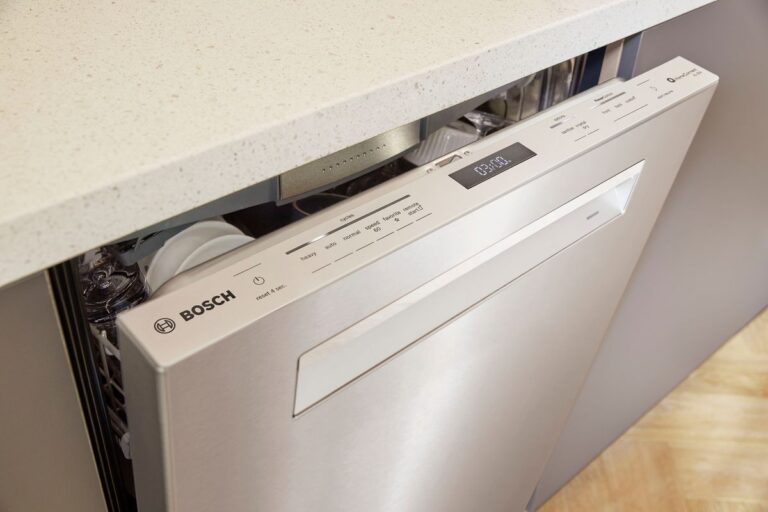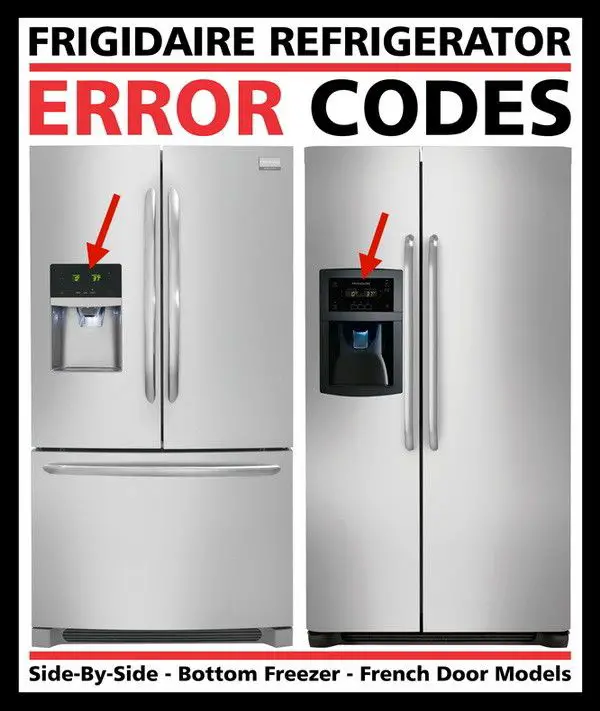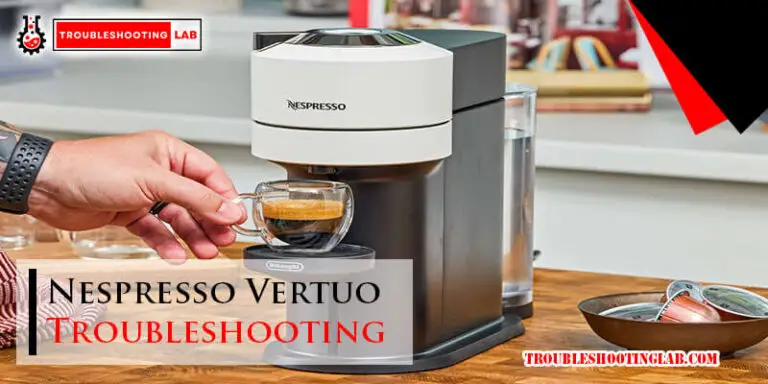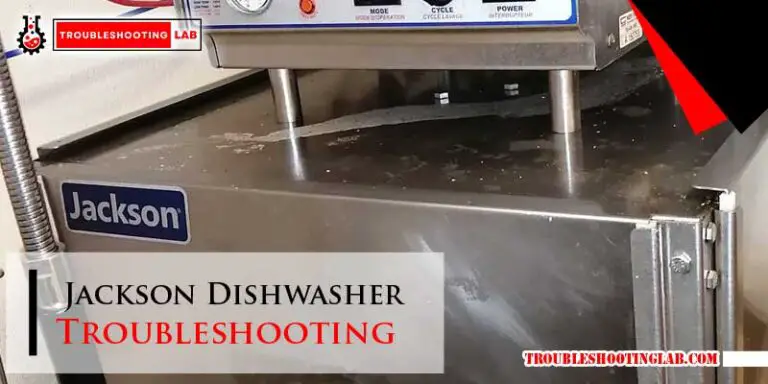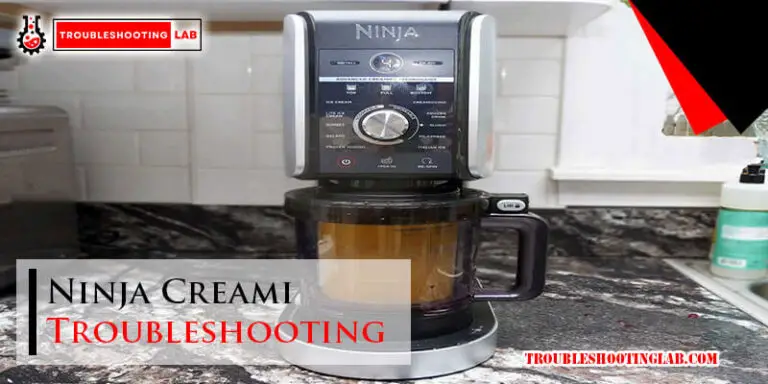Blomberg Dishwasher Troubleshooting: Quick Fixes Guide
Imagine this: It’s a busy weekday evening. You’ve just finished a delicious dinner and all you want is to relax.
You open your Blomberg dishwasher, expecting it to handle the dirty dishes effortlessly. But, instead of starting its cycle, it stubbornly refuses to cooperate. Frustrating, isn’t it? You’re not alone. Many homeowners find themselves puzzled when their trusted appliances act up.
But don’t worry! You’re about to discover simple and effective solutions for the most common issues with Blomberg dishwashers. Whether it’s a mysterious error code or a leak, this guide is crafted to help you get your appliance back on track quickly. Keep reading to save yourself time, money, and the headache of dishwasher woes.
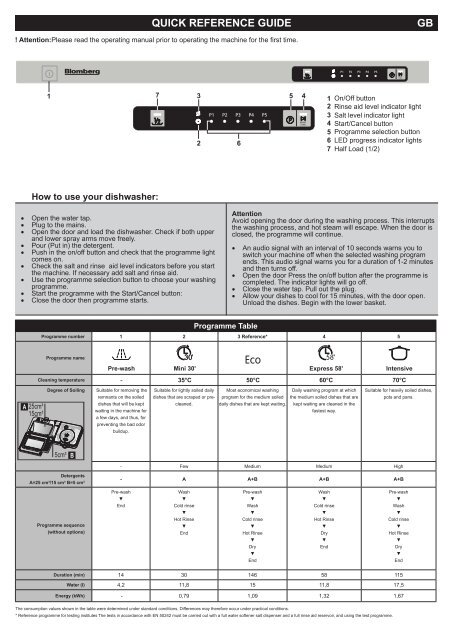
Credit: www.yumpu.com
Common Issues
Blomberg dishwashers are known for their reliability and efficiency. Despite this, users occasionally face issues that disrupt daily routines. Understanding these common problems can help resolve them quickly and restore the dishwasher’s performance. Let’s explore some frequent challenges and ways to address them.
Dishwasher Not Starting
Is your Blomberg dishwasher refusing to start? First, check the power source. Ensure the plug is secure and the outlet works. Confirm that the door latches properly. A faulty latch prevents the dishwasher from starting. Examine the control panel for signs of damage. Reset the dishwasher by unplugging it for a few minutes. If problems persist, consult a professional.
Dishes Not Cleaning Properly
Are your dishes coming out dirty? Verify that the spray arms are not blocked. Clear any obstructions to ensure proper water flow. Use the correct detergent and measure it accurately. Hard water might need a special rinse aid. Check the filters for debris. Clean them regularly to maintain efficiency. Ensure you do not overload the dishwasher. Proper arrangement ensures thorough cleaning.
Dishwasher Not Draining
Is water pooling at the bottom of the dishwasher? Look at the drain hose. Confirm it is not kinked or clogged. Clean the filter to prevent blockages. Check the air gap for debris. Cleaning it can restore proper drainage. Inspect the pump for damage or obstruction. If the issue continues, seek help from a professional technician.
Power Supply Problems
Power supply issues often hinder the performance of Blomberg dishwashers. If the dishwasher fails to start, checking the power supply is crucial. Identifying the source of these power disruptions can save time and prevent frustration.
Checking Power Connection
The first step is to ensure the dishwasher is plugged in. Sometimes, the plug may be loose or disconnected. Check the power cord for any visible damage. A damaged cord can disrupt the flow of electricity. Replace it if necessary. Confirm that the outlet is functional by testing it with another device.
Inspecting Circuit Breaker
If the dishwasher is properly plugged in, inspect the circuit breaker. Locate the breaker panel in your home. Check if the dishwasher’s breaker has tripped. A tripped breaker interrupts the power flow. Reset the breaker by flipping it off and then back on. If it trips again, there might be an electrical issue. Consult a professional for further diagnosis.
Water Supply Concerns
Dishwashers are a staple in modern kitchens, making life easier by taking care of dirty dishes with a simple press of a button. However, when your Blomberg dishwasher struggles with water supply issues, it can disrupt your entire routine. Addressing these concerns promptly can save you time and prevent further complications. So, let’s dive into the nitty-gritty of ensuring your dishwasher gets the water it needs.
Ensuring Proper Water Flow
First and foremost, check if your water supply to the dishwasher is steady. Have you noticed any irregularities in the water pressure? It’s crucial to ensure that the water flows freely from your home’s plumbing to the dishwasher.
Start by inspecting the water hose connected to your dishwasher. Is it kinked or bent? Such obstructions can hinder the water flow and affect cleaning efficiency. Straighten out any bends and ensure the hose is securely attached at both ends.
Additionally, consider the water pressure in your home. Low pressure might be the culprit behind inadequate water supply to the dishwasher. You might want to check if other appliances are simultaneously using water, causing a drop in pressure.
Examining Water Inlet Valve
The water inlet valve is a critical component of your dishwasher’s water supply system. It controls the flow of water into the machine. A malfunctioning valve can lead to either too little or too much water entering the dishwasher.
Inspect the valve for any signs of damage or wear. If you notice cracks or leaks, it might be time to replace the valve. But before jumping to conclusions, ensure the valve is not blocked by debris or sediment that could be affecting its performance.
If cleaning doesn’t resolve the issue, consider seeking professional help to replace the valve. This step can drastically improve your dishwasher’s functionality and prevent water supply problems.
Have you ever had a dishwasher flood your kitchen because of a faulty valve? It’s a frustrating experience that reminds us of the importance of regular maintenance checks. Ensuring everything is in working order can prevent such mishaps.
Remember, your dishwasher’s performance is directly linked to its water supply system. Regular inspections and timely interventions can keep it running smoothly. So, why wait until your dishes start piling up? Start troubleshooting and ensure your dishwasher is always ready for action.
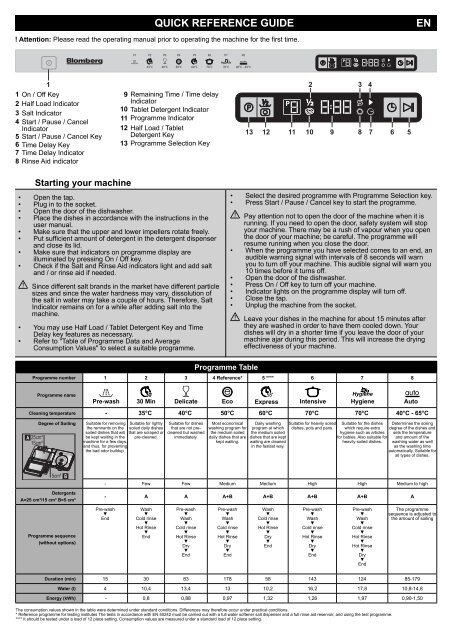
Credit: www.yumpu.com
Cleaning And Maintenance
Regular cleaning and maintenance keep your Blomberg dishwasher running smoothly. A well-maintained dishwasher ensures sparkling dishes and extends the appliance’s life. Neglecting these tasks can lead to poor performance and higher energy use. Simple cleaning routines can prevent such issues. Let’s dive into key maintenance tasks.
Filter Cleaning Steps
The dishwasher filter catches food particles and debris. Over time, it can get clogged. Clean it monthly for best performance. First, remove the bottom rack for easy access. Locate the filter at the dishwasher’s base. Twist it counterclockwise to remove it. Rinse the filter under warm water. Use a soft brush to remove stubborn particles. Once clean, place the filter back and secure it by twisting clockwise.
Spray Arm Maintenance
Spray arms distribute water evenly inside the dishwasher. Clogs in spray holes can affect cleaning efficiency. Remove the arms for a thorough clean. First, unscrew the nut holding the spray arm. Carefully lift it off. Use a toothpick to clear any blockages in the spray holes. Rinse the arm under warm water. Check for free movement before reinstalling. Secure it back with the nut.
Error Codes
Blomberg dishwasher error codes help identify problems quickly. Each code points to a specific issue. Understanding these codes can simplify troubleshooting and ensure efficient repairs.
Error codes in your Blomberg dishwasher can be puzzling but they hold valuable clues to resolving issues. You might feel a bit overwhelmed when you see them flashing on the display. However, understanding these codes can transform frustration into a quick fix.Interpreting Display Codes
When your dishwasher flashes an error code, it is trying to communicate a problem. For instance, you might see a code like E01 or E02. Each code corresponds to a specific issue, such as water inlet problems or drain issues. Imagine the dishwasher as a friend trying to tell you what’s wrong. You wouldn’t ignore a friend’s concerns, right? So, take a moment to decode these messages. You could find the solution in your user manual or even online resources.Resetting The Dishwasher
Sometimes, a simple reset can work wonders. It’s like giving your dishwasher a fresh start. To reset, unplug it or turn off the power at the circuit breaker for a few minutes. Think about how refreshing a break can be. Your dishwasher benefits similarly from a reset. Once plugged back in, it might just decide to cooperate without any fuss. Doesn’t it feel great to solve problems with minimal effort? Next time you’re faced with an error code, consider whether a reset is the answer you need. Remember, every appliance deserves a second chance. Isn’t it intriguing how technology communicates with us? What error code has challenged you recently, and how did you tackle it?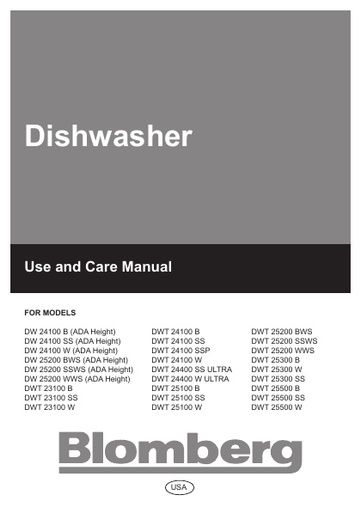
Credit: www.northlondonappliancerepairs.co.uk
Noise Issues
Blomberg dishwashers are known for their efficiency and durability. Yet, like any appliance, they may encounter issues. Noise disturbances are common in dishwashers. These sounds can be annoying and alarming. Understanding these noises can help maintain the appliance effectively. Identifying and addressing these issues is crucial for a peaceful kitchen.
Identifying Unusual Sounds
Start by listening carefully to the dishwasher. Note if the noise is constant or intermittent. Grinding noises could indicate a problem with the motor. Rattling sounds often mean loose items inside. Humming or buzzing might point to electrical issues. Each sound can signify a different problem. Identifying the type of noise is the first step.
Silencing Common Noises
Once you’ve identified the noise, it’s time to act. For grinding sounds, check the motor and pump. Look for any debris that might be stuck. Tighten any loose parts to stop rattling. Ensure dishes are loaded correctly to avoid clinking. If you hear buzzing, inspect the wiring. Ensure all connections are secure. Regular maintenance can prevent these issues. Keep your dishwasher running smoothly with these simple checks.
Door And Seal Problems
Blomberg dishwashers are known for their reliability, but like any appliance, they can encounter issues over time. One common problem revolves around the door and seal. These components are crucial for ensuring your dishwasher operates without leaking and maintains optimal performance. Understanding how to troubleshoot these issues can save you from unnecessary repair costs and ensure your dishwasher continues to run smoothly.
Checking Door Latch
Have you ever tried closing your dishwasher door only to find it won’t latch properly? This can be frustrating and might prevent the appliance from starting. First, inspect the latch to see if there’s any visible obstruction or damage. Sometimes, food particles or debris can get stuck, preventing the latch from engaging correctly.
If the latch appears clean but still doesn’t work, consider adjusting the door alignment. A misaligned door can cause the latch to miss its catch. You might need to gently push or adjust the door to ensure it closes properly. Ask yourself, could a simple tweak fix the problem?
Replacing Door Seals
If you notice water pooling around your dishwasher, it might be time to replace the door seals. Worn-out seals can lead to leaks and inefficient washing cycles. Examine the seals for signs of wear, such as cracks or tears. A damaged seal won’t create the necessary barrier to keep water inside.
Replacing seals can be a straightforward task. Make sure you purchase the correct seal for your model. Remove the old seal gently, as pulling too hard might damage the door. Place the new seal in the groove, ensuring it’s snug and secure. Could replacing a simple seal be the solution to your leaking problem?
Addressing door and seal issues can seem daunting, but with a bit of patience and attention, you can solve these problems effectively. By focusing on these specific areas, you might just save yourself from the hassle of a full repair and keep your dishwasher running efficiently.
Professional Help
Blomberg dishwashers offer reliable performance for most households. But even the best appliances sometimes need expert attention. Recognizing when professional help is necessary can save time and money. Trying to fix complex issues without the right skills may cause more harm. This section guides on when to seek professional assistance and how to find reliable service.
When To Call A Technician
Strange noises during operation often indicate a bigger problem. Leaks are another sign that needs a technician’s expertise. If your dishwasher doesn’t start, it might be an electrical issue. Unusual smells or incomplete cleaning cycles suggest deeper faults. These problems require professional diagnosis and repair.
A technician can efficiently identify and solve these issues. They have tools and experience that homeowners lack. Calling a professional ensures your dishwasher runs smoothly again.
Choosing A Reliable Service
Finding a trustworthy service is important. Start by asking friends for recommendations. Online reviews offer insights into customer satisfaction. Look for services with certified and experienced technicians. Ensure they specialize in Blomberg dishwashers for the best results.
Compare prices from different services before choosing. But remember, the cheapest option may not be the best. Quality work often saves money in the long run. Check if the service provides a warranty on repairs. This guarantees peace of mind for future issues.
Frequently Asked Questions
Why Is My Blomberg Dishwasher Not Starting?
Check the power supply. Ensure the door is closed properly. Examine the control panel settings.
What Causes A Blomberg Dishwasher To Leak Water?
Inspect the door seal for damage. Check for blockages in the drain hose. Tighten any loose connections.
How Do I Reset My Blomberg Dishwasher?
Locate the reset button or switch. Press and hold for a few seconds. Refer to the manual for specific instructions.
Why Is My Blomberg Dishwasher Not Draining?
Clear any blockages in the drain hose. Clean the filter. Check the drain pump for issues.
How Can I Fix A Noisy Blomberg Dishwasher?
Inspect for loose items inside. Check the spray arm and filter. Tighten any loose screws or parts.
Conclusion
Fixing your Blomberg dishwasher can be simple with these tips. Start by identifying the issue. Common problems often have easy solutions. Check filters and spray arms regularly. Keep the door seal clean to avoid leaks. Reset the machine if it acts strange.
Consult the manual for specific guidance. Seek professional help when issues persist. Remember, regular maintenance prevents bigger problems. Caring for your dishwasher saves time and money. Enjoy hassle-free cleaning with these troubleshooting steps. Keep your kitchen running smoothly. Your appliances deserve attention and care.

